Diamond Color: The complete A-Z guide
Key Takeaways
- As one of the Four Cs, Color is a very important subject for any shopper to understand before they invest in a diamond.
- Unless you’re looking at fancy color diamonds – which can be any color – the term ‘color’ always refers to the presence of a yellow or brown-ish hue. It could be barely noticeable, or glaringly obvious, but is invariably considered unattractive and undesirable, particularly for diamonds destined to be used in jewelry.
- There is no ‘ideal’ color grade. Paying extra for a Colorless diamond (D, E, or F) is a waste of money, so focus on Near Colorless (G, H, I, and J) diamonds that look as good as higher graded stones.
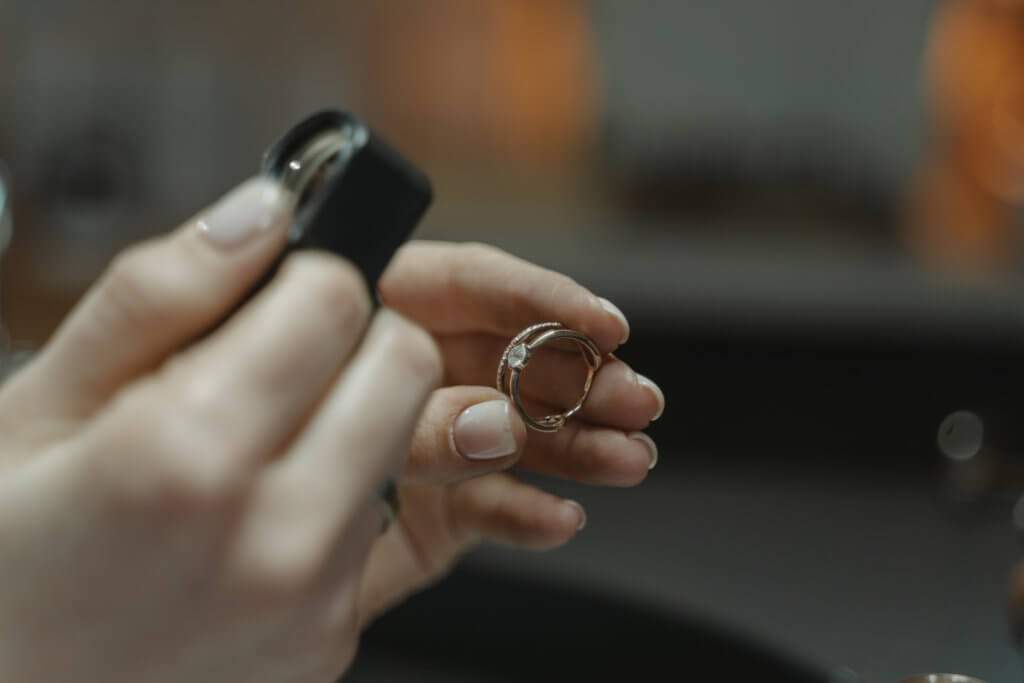
When it comes to buying a diamond for the very first time, there are the obvious considerations – shape and, of course, size – and the considerations that only become apparent when you actually start researching these fascinating stones for the first time.
Most of us, when we hear the word ‘diamond’ will picture the archetypal Round Brilliant – glassy, bright, and sparkling with flashes of both colorful and white light. If you already know the sort of thing you want, you might picture an Emerald cut or Oval – but, moral of the story, it’s probably highly transparent and lustrous.
This is what most shoppers are looking for – and it’s not all that hard to find, provided you understand the concept of diamond color.
It might sound a little contradictory, considering you’re looking for a clear diamond, but the fact is that plenty of diamonds out there feature varying shades of color – a yellowish, brownish tint that can ruin an otherwise beautiful ring – and avoiding it is essential.
- What is Diamond Color?
- Understanding the Color Scale
- Color and Shape
- Color and Price
- Color and Metal
- Our Summary
What is Diamond Color?
In clear diamonds, it is very common for chemical impurities to cause a yellow hue. Color refers to the extent of this hue – whether the diamond is totally transparent or noticeably affected by this unwanted color.
When it comes to the broader definition of ‘color’ diamonds can be separated into two categories: fancy color diamonds, which can feature a broad range of natural hues of green, blue, purple, red, pink, yellow, brown, and grey, and clear diamonds, which are by far the most common choice for engagement rings.
Fancy color diamonds are assessed and graded differently in gemological labs, even in the case of yellow fancy color diamonds, which are clearly distinguishable from clear diamonds with poor color – and considered far more attractive. Back in 2005, model Heidi Klum wore a canary yellow diamond engagement ring, for instance.
Clear diamonds are assessed against the GIA’s color scale, with clearer diamonds considered far more desirable – and far more valuable – than those that feature any amount of color at all.
What Causes Color in Diamonds?
While diamonds are created from carbon, it’s possible for trace amounts of other chemical elements to become ‘trapped’ within the diamond as it forms. While different chemical elements produce different colors, the yellow coloration found in clear diamonds is caused by nitrogen.
This is incredibly common, and totally colorless diamonds are considerably rarer than those that contain a slight amount of color – even so slight that we cannot see it without the right lighting, and strong magnification (and an expertly trained eye). Most diamonds bought for engagement rings feature some color, but such a small amount that we will never be able to detect it.
The important thing to remember is that color is a natural phenomenon – and a fascinating subject – although that’s not to say that any of us want our diamonds to feature a noticeable tint of yellow.
Certain shapes – like the Cushion – do reveal it more than others, but even then it is avoided easily enough with an in-person appraisal.
Can You Change a Diamond’s Color?
Not in the case of clear diamonds, although some treatments have been created to enhance natural fancy color diamonds’ hues.
In the case of clear diamonds, however, purchasing a much cheaper diamond with a noticeable yellow hue may be a tempting prospect – until you realize that the yellow color within the stone is not something that can be polished or radiated away.
That’s not to say, however, that a slight amount of color can’t be ‘off-set’ or complemented by setting the diamond within the right kind of ring setting.
Contrasting the diamond against a warmer metal, like yellow gold, has proven very popular among those who wish to save money on a diamond with a slight amount of color. The bright, star-like white found in platinum is the worst choice buyers can make if their diamond does not appear colorless, as the contrast between the diamond and the metal will make the yellow tint appear significantly worse than it really is.
By contrasting the very slight yellow within the diamond against the bright, warm yellow of gold – or even the deep blush of rose gold – the brighter, whiter properties of that diamond can be made more obvious, rather than a slight amount of color.
This only works in diamonds that feature a very mild yellow hue, however. There comes a point where the diamond’s setting will no longer off-set its color, and all shoppers should remain very aware of this if they’re looking to save money on color.
What Color Should a Diamond Sparkle?
A diamond will sparkle with a mix of white flashes, known as brilliance, and multicolored flashes, known as fire.
However far down the color scale a diamond is, a well cut stone will still be capable of producing these two types of sparkle alongside one another. Even with a little color, diamonds won’t sparkle yellow.As we mentioned above, Cut is pivotal – for fire and for brilliance – so put this top on your list of priorities as you start searching.
Which Diamond Color is the Most Expensive?
D Color Diamonds are the most expensive, although there is only a very slim difference in value between any of the colorless diamond grades. You’d have to dip down a few grades to notice any major difference in price.
The difference between an F Color and a G Color Diamond is apt to be more substantial than the difference between an E Color and an F Color Diamond since the former represents a jump from colorless to near-colorless (and the loss of that extra bit of prestige that goes with colorless diamonds).
Again, this is why we recommend looking at those categories within the color grading scale, rather than trying to find the ‘ideal’ color grade for you. You will benefit much more from saving hundreds of dollars in this area than you will from deciding you won’t accept anything less than colorless.
What Gives the Blue Color in Diamond?
In clear diamonds, a blue tint is caused by fluorescence – another undesirable feature that is graded separately from color.
Fancy blue diamonds are caused by the presence of boron, which can produce varying shades from very pale, sky blue to a deep navy.
Fluorescence, however, impacts plenty of clear diamonds, and needs to be considered alongside color. A diamond can be considered totally colorless, and still feature a blue tint due to fluorescence.
You can read more about diamond fluorescence here.
Do Diamonds Get Yellow Over Time?
No. While a yellow-hued diamond may look antiquated, color is not a sign of age, wear and tear, or mishandling.
Once they have finished growing and been pushed to the earth’s surface, diamonds do not become ‘suffused’ with nitrogen, meaning that it is impossible for a once-clear diamond to turn yellow, no matter how old it is.
When worn on the finger, diamonds can be made cloudy by moisturizer, dust and dirt, and makeup, but this can be easily cleaned off – and the diamond’s original luster and sparkle restored. No contaminants can penetrate the diamond’s surface, though, which is why diamonds are frequently passed down through generations and enjoyed for decades, if not centuries, without dropping in quality.
Does Diamond Color Really Matter?
Yes and no. For most people, visible color matters a lot, since it affects the beauty of the stone. That said, color doesn’t matter so much that you have to pay for a diamond with the very highest color grade.
The spectrum that lies between totally colorless diamonds and heavily colored diamonds is a long one, and that means that there are plenty of grades where color is present, but not enough to be noticeable to the naked eye.
And, as we mentioned above, a very, very slight amount of color can be easily disguised within the right setting. So, while it matters that you take the time – and invest the right amount of money – into finding a diamond without a clear and noticeable yellow hue, the exact grade you settle on doesn’t matter – and may even prove to be a waste of your money.
Is Diamond Color or Clarity More Important?
Clarity over color, but only just.
A visible inclusion is more likely to go noticed by the naked eye than trace amounts of color. And, while it is possible to enhance a diamond’s color using the right ring setting – and, of course, not looking at it exclusively under the bright, harsh lights of the grader’s lab – most diamond inclusions cannot be hidden so easily.
Another important thing to consider is the fact that color does not disrupt sparkle. Even a yellow diamond will produce plenty of fire and brilliance, provided that it has been cut properly. But, while it may require a pretty extreme inclusion, poor diamond clarity can impact a diamond’s light performance, making for a very disappointing diamond.
What’s more, some inclusions – particularly those located close to the girdle – make a diamond far more vulnerable to breaking.
In both instances, however, what remains most important is how the diamond appears to the naked eye. If a diamond is eye clean, then any inclusions will be minor, and won’t threaten the beauty, sparkle, or durability of the diamond in any significant way. Similarly, if you can’t spot any color in a diamond, then it really doesn’t matter what color grade is printed within its GIA report.
Still, throwing caution to the wind and going into this process without a care in the world for your diamond’s color grade isn’t the way to do it. For starters, there’s plenty of grades that are just too far down the scale (and too far up) to offer any worthwhile diamonds, so understanding where your ‘sweet spot’ lies with regards to the GIA’s color scale is essential…
Understanding the Color Scale
Every gemological lab and grading organization takes their own approach to diamond grading. At WillYou.Net, however, we put full trust into the GIA. Over many years, they have proven themselves to be the most consistent, painstaking, and unbiased laboratory, and we advise all of our readers to focus their searches on diamonds that are accompanied by an official GIA report.
What are the Grades of Diamond Color?
Diamond color is assessed alphabetically, from D to Z, with D representing diamonds that are totally colorless, and Z representing diamonds with significant color.
The grades are divided into the following subcategories in the following diamond color chart:
| D, E, F | G, H, I, J | K, L, M | N, O, P, Q, R | S, T, U, V, W, X, Y, Z |
| Colorless | Near Colorless | Faint | Very Light | Light |
From the picture below, you can see that distinguishing between a colorless D grade diamond and a Light yellow Z grade diamond is easy. The former possesses an icy white transparency, while the latter appears antiquated – almost like metal that has tarnished over the years.

D to Z diamond grading scale
Distinguishing between two consecutive color grades, however, is significantly harder – and something that only experienced gemologists, jeweler and diamond graders will be able to do. Even then, they will require ideal lighting conditions and strong magnification tools to be able to come to a definitive conclusion over grade.
Consider the fact that the D, E, and F color grades are all considered to be ‘colorless’. There is undoubtedly a difference between a D grade diamond and an F grade diamond, but very few people would ever be capable of identifying it.
While this may seem like it’s going to make the process of choosing a diamond color grade more complicated, this is actually an excellent opportunity for shoppers to save considerable money on their diamond.
We’ll look at diamond color and price in a little more detail below but, for now, keep in mind that color only starts to become noticeable around the J and K color grades – and, even then, it depends on the size and shape of the diamond in question – although, by that point, prices have already dropped dramatically from what they were for D and E color diamonds.
How is Diamond Color Graded?
Each lab has their own methods, but the GIA has curated a ‘master set’ of diamonds against which all new diamonds are compared.
This master set demonstrated the very slight differences between each diamond on the GIA’s scale, and offer the most reliable comparison for graders to use as they assess a diamond in need of grading.
As with clarity, the diamond is at first studied by two expert graders. If they both draw the same conclusion and assign the same color grade, this will be printed within the GIA report. If, however, they disagree, then the diamond will be assessed again by an additional grader until a consensus is reached.
As you might have guessed, color is assessed under some very strict lighting conditions, which is why it is easier to spot the presence of even a slight yellow tint in the lab that it is when the diamond is mounted in a ring setting and worn on the finger.
Do Colorless Diamonds Sparkle More?
No, colorless diamonds are valued for their purity and transparency, rather than their superior brilliance, fire, or scintillation.
The reason Cut is regarded as by far the most important of the Four Cs for any diamond buyer is because it has the most significant bearing on a diamond’s sparkle. A poor cut, whether due to asymmetries, polishing marks, poor weight ratio or any other imperfection, can risk dull, lifeless, and decidedly un-brilliant diamonds.
Nobody wants this – and that’s why we only ever recommend shoppers look at diamonds with a cut grade of Very Good or, better yet, Excellent.
Color is important because of the fact that, unless your partner wants a fancy yellow color diamond (in which case, don’t look at heavily colored clear diamonds), no one wants to invest in a diamond with a noticeable yellow tint.
Sparkle is important – and, arguably, the most important – but it’s not everything.
What Does Near Colorless Diamond Mean?
Comprising G, H, I and J diamonds, Near Colorless refers to stones that feature only trace amounts of color – typically visible only in the lab, and not when the diamond is being viewed or worn in normal conditions.
While it may sound like a vague statement to make about something so important, the ‘Near Colorless’ category is recognized and used around the world by those who buy, sell, grade, and collect diamonds.
Grading diamond color is a subjective task. Yes, the GIA has studied and logged thousands of diamonds over the years to ensure that the process of grading a diamond’s color is as objective as possible – not to mention the fact that at least two graders will appraise every diamond they receive – but, even then, the process comes down to opinion.
This means that phrases like ‘Near Colorless’ and ‘Very Light’ prove the most effective when assessing color – and they will prove very useful for you, too…
What is the Best Color for a Diamond?
Objectively, D is the best color grade, since it represents diamonds with no color at all. For you – and any other shopper out there – the best diamond grade is found in the Near Colorless range, not the Colorless range.
This all comes down to cost, and the fact that any diamond feature you cannot detect with your naked eye is simply not worth paying for.
If you were looking at two diamonds, one featuring a D color (and a hefty price tag) and the other featuring an H color (and a much lower price), and you found yourself totally incapable of telling the difference between the two, which one represents the better investment?
The H Color – since opting for the D color means spending around 20% more, provided the diamonds are of the same weight and quality, on a feature that you will never see.
The prestige attached to D color diamonds is felt most keenly among collectors, rather than people who are simply buying a diamond for an engagement ring. Don’t fall into the trap of thinking that the ‘best’ grade is the best grade for you.
What is the Lowest Color Diamond You Should Buy?
We would rarely recommend buyers stray beyond the Near Colorless range, which means that J represents the lowest grade you should consider.
K color diamonds are by no means the worst – and, for smaller stones, it is possible to find passable diamonds at that grade.
The trouble is it represents shaky ground. By definition, the K color features ‘Faint’ color. Remember that judging diamond color is subjective, and just because your eyes don’t pick up on that faint yellow color does not mean that someone else’s won’t.
Sure, J color diamonds are just as subjective as K color diamonds, but that label of ‘Near Colorless’ offers a much stronger level of reassurance, and one that we consider to be worth the cost.
Diamond color is a great category to save money on, but there is always a boundary – and going beyond that boundary could put the beauty of your engagement ring at risk.
Is G Color Diamond Good?
Yes. In the US, the G color diamond represents the optimal color grade, given its proximity to the colorless grades, and much lower cost.
The jump from one diamond grade to another will always be represented by a change in price. An H diamond won’t be valued the same as a comparable I diamond, just as an O diamond will not be valued at the same price as a comparable P diamond.
Still, the most significant jumps in price will be seen at the boundary between one color category and another – and, most notably, the boundary between Colorless and Near Colorless diamonds.
This is down to the prestige of a Colorless diamond. Not only are they popular among collectors, but they are also popular among shoppers who have not done their research, and who are wary of any grade that is not considered to be totally colorless.
This means that G diamonds enjoy a pretty strong position on the diamond color scale. You’re not going to find a G color diamond that looks even slightly yellow to the naked eye, and so it represents a very safe ‘sweet spot’ for shoppers wanting to save a little money.
Nevertheless, it’s not the only color grade that offers a great opportunity for well-researched buyers. There are diamond shapes capable of carrying more color than that before it proves noticeable, meaning you could save even more money without sacrificing on the beauty of your diamond…
Color and Shape
While it might not sound all that important, the way a diamond has been cut will have some bearing on how it holds and presents color. This can be highly beneficial to those looking for fancy color diamonds, as shapes that ‘hold’ the color better will prove the most beautiful. The opposite holds true, however, for anyone looking at clear diamonds.
Which Diamond Shape Holds Color?
The cushion is infamous for holding color, making it a popular shape for fancy color diamonds. The Emerald cut is also known to retain color, meaning that shoppers may need to aim for a higher color grade for this shape than they would for, say, a Round Brilliant.
The Emerald cut was intentionally designed to offer a clear view into the depths of the stone. Its wider, open facets are very different to the intricate and scintillating facets of the Round Brilliant and modified brilliant cuts, and that can make finding quality diamond more difficult. Shoppers will have to aim for a higher clarity grade, and a higher color grade, to ensure a beautiful stone.
The Cushion’s facet pattern and depth do mean that you’ll want to aim for a G color grade, particularly if you’re looking at larger diamonds. Shoppers looking at Cushion cut diamonds may want to settle on a yellow or rose gold setting, too, to bring out the transparency of the diamond further.
Color also tends to be more noticeable in sharper points. The tip of the Pear and Heart cuts, for instance, as well as the sharply pointed corners of the Princess, can show color more than the main body of the cuts – although this is more easily disguised by the prongs of the ring’s setting.
What Diamond Hides Color?
The Round Brilliant is highly effective at hiding color, as well as the Radiant shape.
While the Round Brilliant’s popularity is often put down to its incredible sparkle and classic shape, another lesser known benefit to this cut is its ability to mask color. This means that many shoppers will find visually perfect diamonds at lower (and much more affordable) color grades, even as low as a J grade.
The Radiant cut is a fascinating hybrid between the Emerald cut and the brilliant facet pattern found in the Round and fancy cuts. If you love the elegant shape of the Emerald, with its elongated, straight edges and beveled corners, but worry about finding a stone with the clarity and color needed to make the most of its beautiful facets, the Radiant could be an excellent choice.
Color and Price
Throughout this article, we’ve suggested that the best color grade for any shopper is one that finds a beneficial middle ground between high cost, and low quality. This is the same basic principle behind clarity – finding a grade that ensures visual perfection, even if the diamond’s value has been significantly impacted by invisible flaws.
How Much Does Diamond Color Affect Price?
The difference between two consecutive color grades tends to fall between 10% and 15%, although this will be higher for diamonds that are separated by a different color category, and lower as diamond color quality significantly decreases.
You’ll notice a particularly dramatic drop in price if you look at diamonds from the ‘Very Light’ color category, although we would never recommend you waste time on these stones anyway.
Avoiding the highest grades can push your savings well into four figures – potentially covering the cost of a more elaborate ring setting.
What Color of Diamond is Worth the Most?
By far the most valuable color grade is D. A 1 carat VS2 D Color Round Brilliant diamond can cost $12,000+, which is almost double that of a comparable H color diamond.
When it comes to fancy color diamonds, the most valuable colors are pink and red. Their rarity and romantic appearances fetch a premium price among collectors and jewelers – and they’re pretty uncommon sights, particularly in engagement rings.
Color and Metal
We’ve already mentioned that making a tactful choice about the color of your ring setting can complement a diamond with a trace among of color, but what if you’ve already settled on your choice of metal? Many brides favor one particular metal color over another, and an important part of designing your engagement ring is catering to your partner’s preference – and her existing jewelry collection.
What is the Best Diamond Color for Platinum?
While it does depend on the shape of diamond you choose, we’d recommend an H or I color for Round Brilliant diamonds, although a higher grade will be necessary for above-average carat weights, or cuts that hold onto color more.
Platinum has many benefits. Not only is it strong and used at a level of purity much better suited to those with allergies to certain metals, but it’s also got a much brighter and crisper shine to it than white gold. If your partner’s jewelry collection features a lot of sterling silver and white gold – and you’ve got the budget to stretch to platinum – then this is a great choice of metal.
This classic Round Solitaire Engagement Ring in Platinum is a stunning example of the combination of a clear diamond with near-luminescent platinum – and, to pull it off, you’ll want to make sure you’re using a diamond with no visible color.
When it comes to one of the more troublesome cuts, a higher color grade – around G or H – will be needed. If you’re set on platinum, then complementing a Cushion cut diamond with a halo, as in this Cushion Cut Halo Engagement Ring, can help to make doubly sure that you won’t notice any color. Just make sure the melee diamonds in the halo are not graded higher for color than the center diamond.
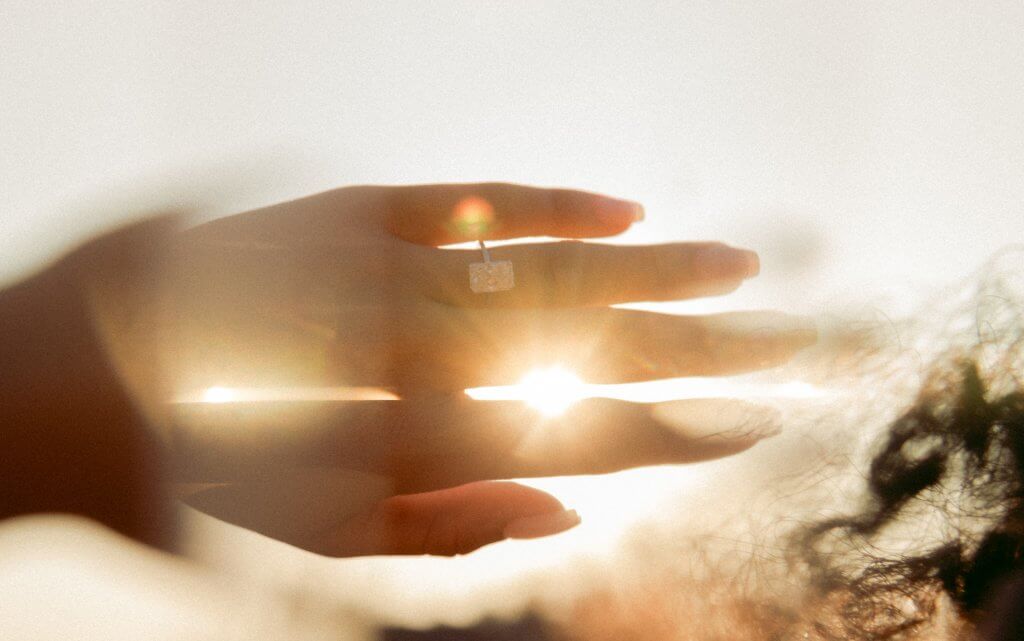
What is the Best Diamond Color for Yellow Gold?
For a Round Brilliant, we’d recommend you look at I or J color diamonds. For the Emerald or Cushion, we would generally recommend a similar grade since clearer diamonds will reflect the color of the metal and lose transparency anyway.
This is seen as a desirable feature in any diamond set in yellow gold, and particularly the Emerald cut. This Emerald Cut Pave Engagement Ring will inevitably absorb some of the color of the setting and shank, so overpaying on a high color grade – even for a shape that retains color more than the Round Brilliant – is still a risk.
Our best advice, whether you’re going for platinum or gold, is to talk things through with your jeweler. They will hold significantly more experience in complementing diamonds with precious metals, and will understand what your chosen diamond will require to look its best.
Does Rose Gold Affect Diamond Color?
Yes, the blush of rose gold can be reflected through your diamond – and that is a large part of the reason why it is such a popular choice.
Few things are more romantic than diamond, but a diamond mounted within a rose gold setting – and gently reflecting that warm, pink hue of the metal is the perfect choice for the more starry-eyed among us.
As with yellow gold, the warm tones of rose gold can appear to lower the color grade of a very clear diamond by one or two grades, meaning investing in an F diamond and setting it in rose gold is tantamount to investing in an H diamond – only far more expensive.
Again, investing in the highest color grades here is a waste of money. In the case of this romantic Infinity Princess Cut Engagement Ring in Rose Gold, for instance, the warm hue of the metal, the complementary melee diamonds on the shank, and the placement of the prongs at the stone’s four corners all mean that a diamond with a lower color grade will be complemented perfectly, and appear clear.
Our Summary: What Color Should a Good Diamond be?
A good diamond – and, by extension, a good investment – is one that appears colorless when viewed under normal lighting conditions, but which features enough color that the price is significantly lower than it otherwise could be.
Finding a diamond that looks clear is only half the battle. The true test is finding a diamond that looks clear in spite of its color. A D color diamond will look colorless because it is, but it will be a very poor investment; a J color diamond will look colorless in spite of its color, and, for that reason, it will be a very good investment.
If you’re reading this guide, then we’re willing to bet that you’re not an expert gemologist or collector of precious gemstones. We’re also willing to bet that your partner, and her parents, friends and coworkers are not going to appraise your chosen engagement ring under a headtorch or magnifying glass – and neither are they going to ask to see the diamond’s GIA report.
Instead, they’re going to appreciate it under natural light – or under the soft lights of your home. They’re going to see the ring as a whole, rather than the diamond as a set of grades and benchmarks of quality that don’t make themselves known without proper equipment. And what if they do? One less relative to invite to the wedding.
The best diamond color grades fall in the Near Colorless range. G, H, I and J represent the strongest choices you can make, and even the more demanding shapes will offer plenty of good options in this category.
There, you’ll save money but keep the quality you want – and need – if you’re going to pull off the task of creating the ring of her dreams.
The nature of diamond color means that, even if you’re focusing on the Near Colorless grades, you’ll want to see the diamond in person – and judge it with your own eyes – before you commit any money to it. You can browse our full range of GIA graded diamonds here, then go to view it at a trusted local jewelry store capable of offering their own expert advice on the stone’s Cut, Color, and Clarity.
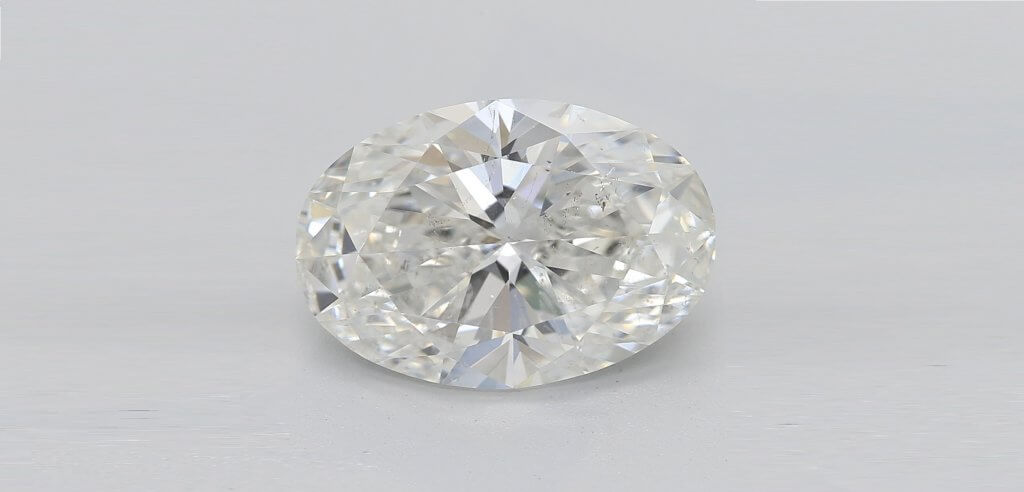
Jul 18, 2022 By Willyou.net
What You Didn’T Know About I Color Diamonds

Jul 18, 2022 By Willyou.net
What You Don’T Know About K Color Diamonds
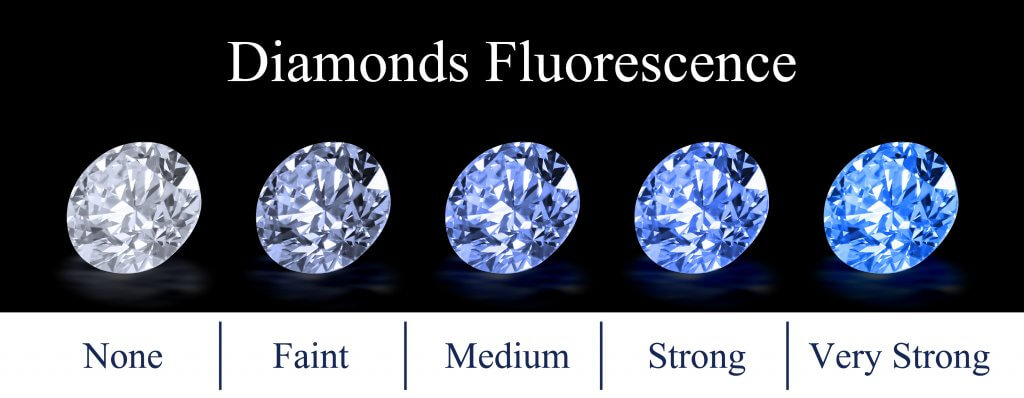
Jul 18, 2022 By Willyou.net
The Negative Effects Of Fluorescence On Diamond Appearance
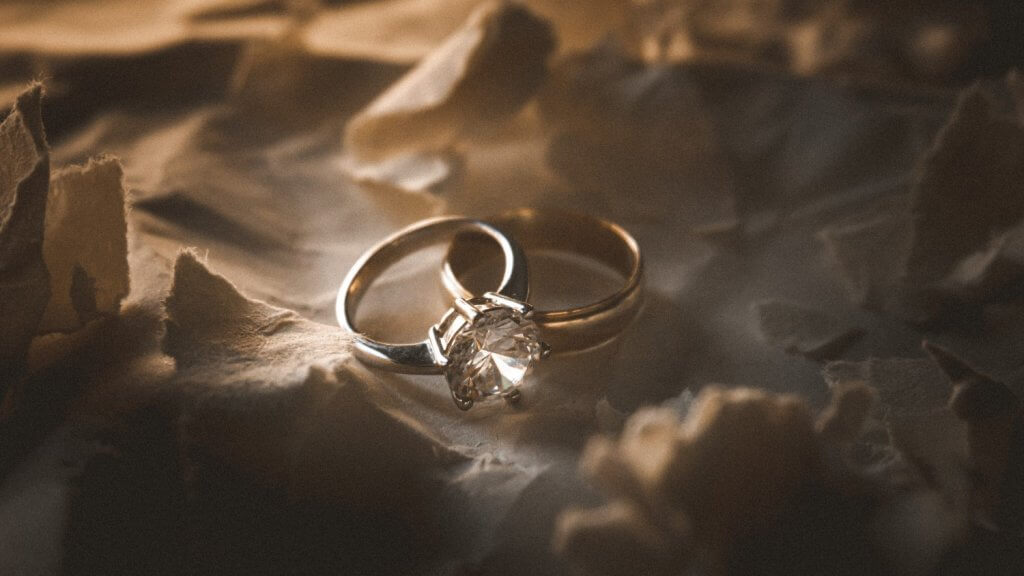
Mar 12, 2022 By Willyou.net
Colorless Or Near Colorless: Which Is Best?
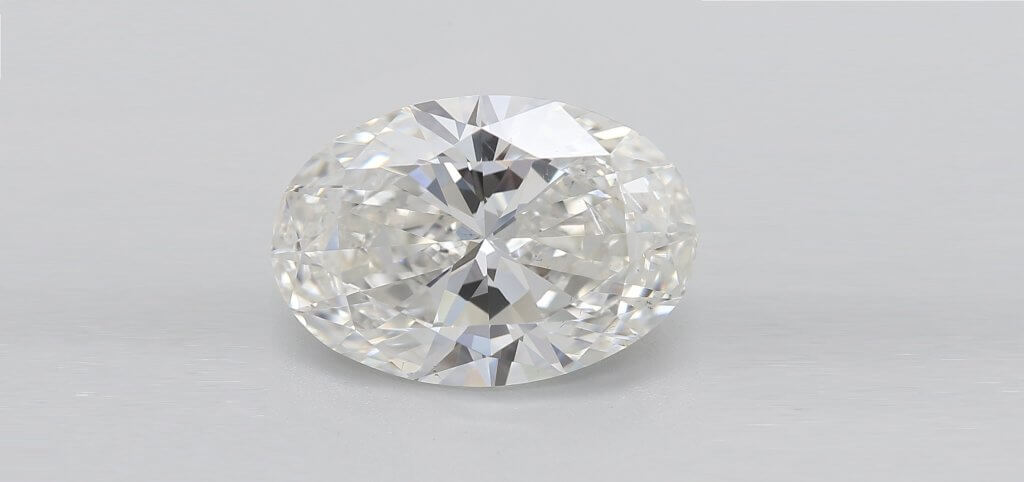
Sep 24, 2021 By Willyou.net
H Color Diamonds: The Ins And Outs
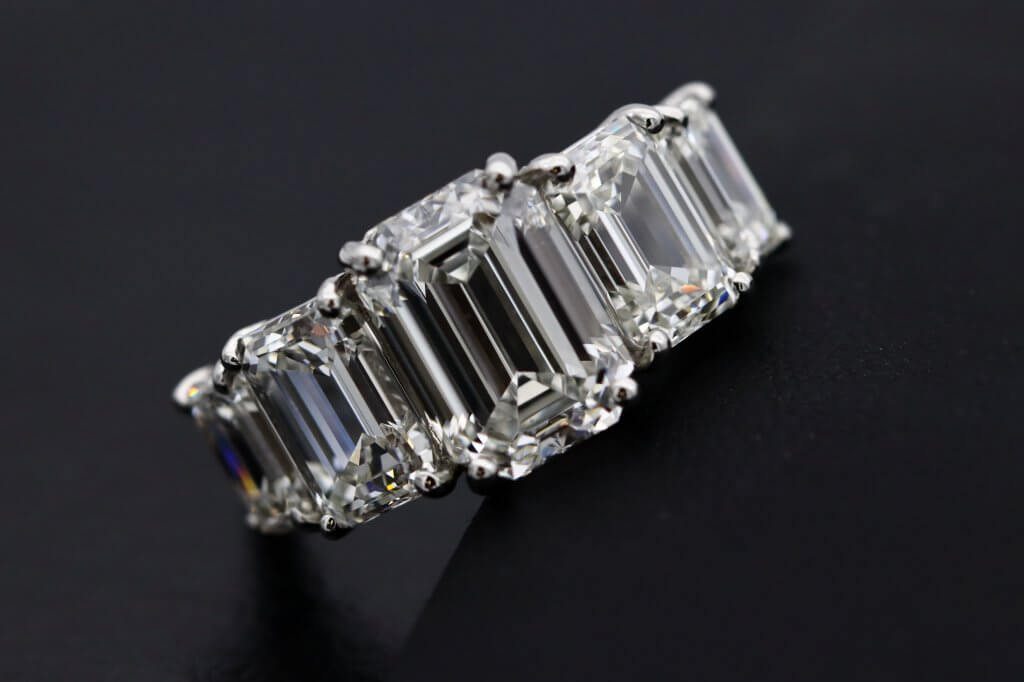
Sep 24, 2021 By Willyou.net
Choosing D Color Diamonds: A Complete Guide
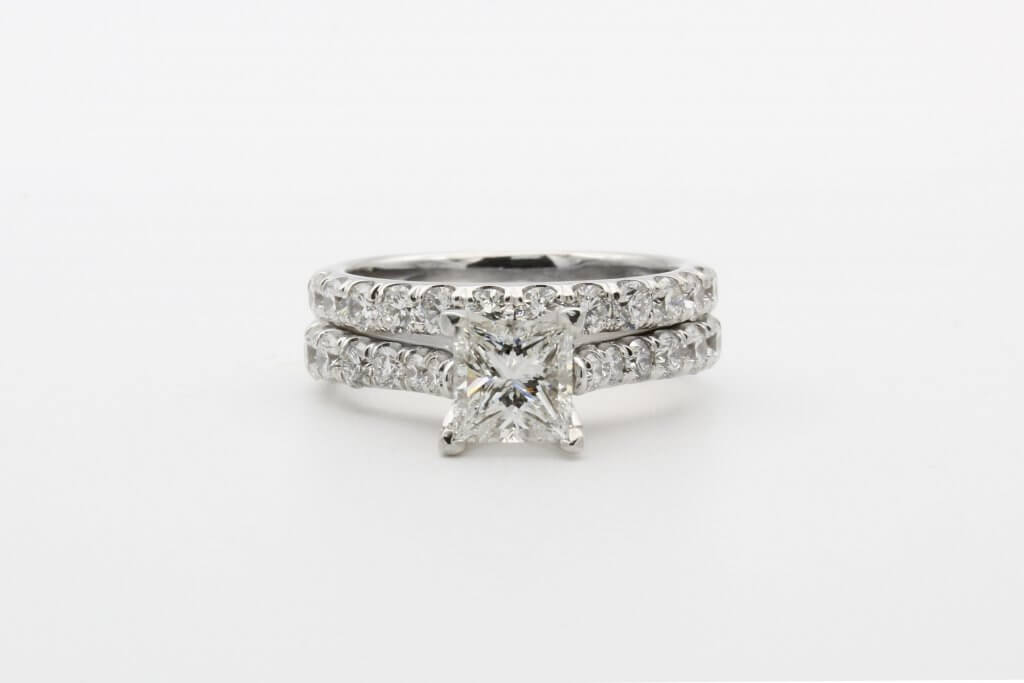
Sep 10, 2021 By Willyou.net
Are J Color Diamonds Best Bang For Your Buck?

Sep 9, 2021 By Willyou.net
Everything You Need to Know About E Color Diamonds
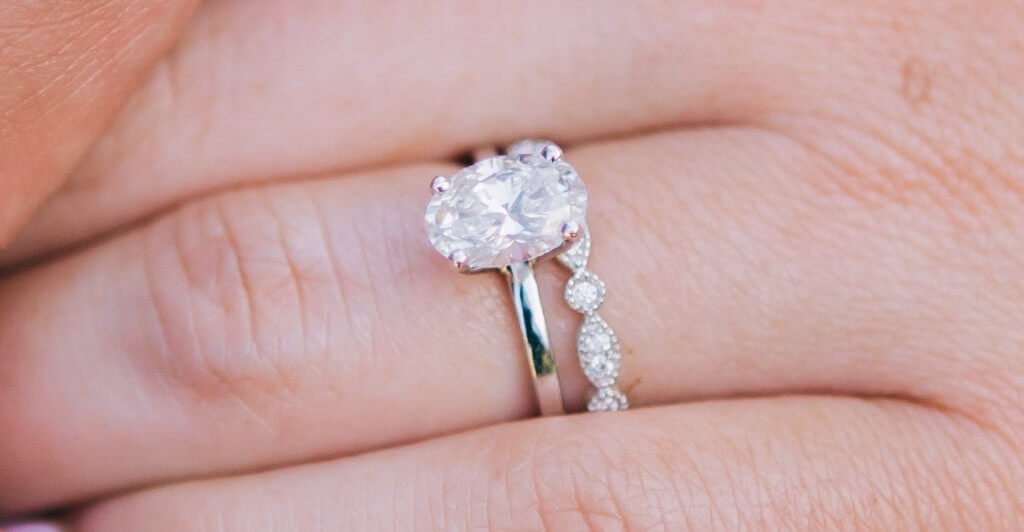
Sep 2, 2021 By Willyou.net
Choosing G Color Diamonds: A Complete Guide
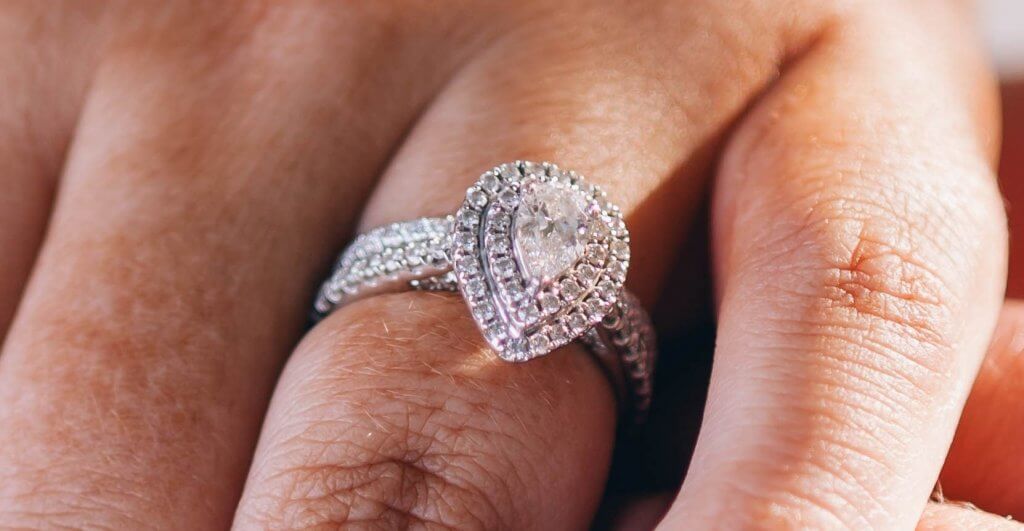
Sep 2, 2021 By Willyou.net
Choosing F Color Diamonds: A Complete Guide








